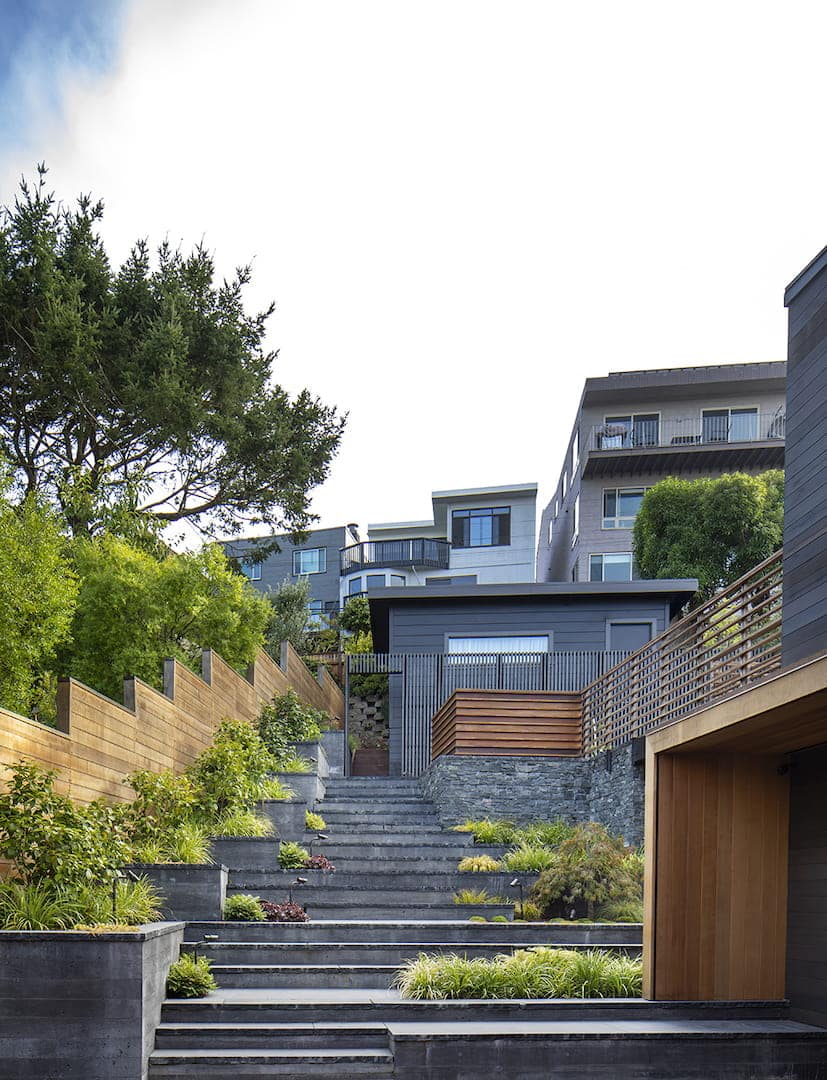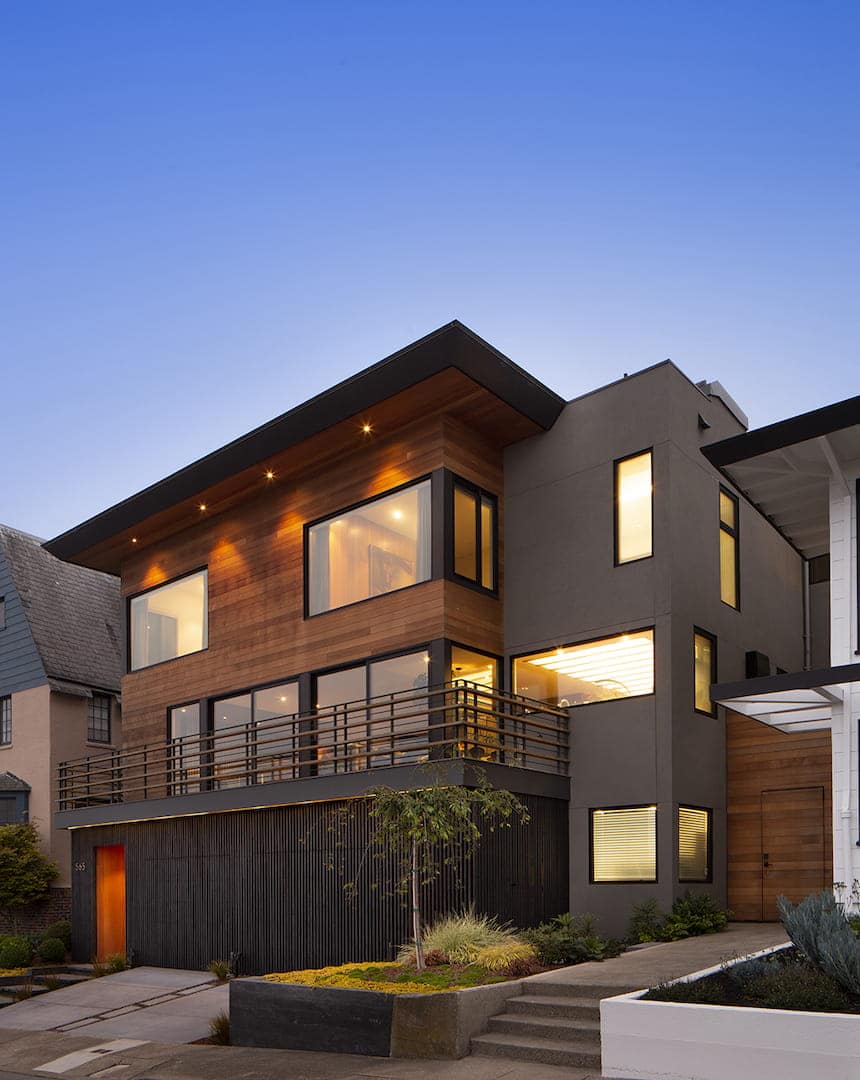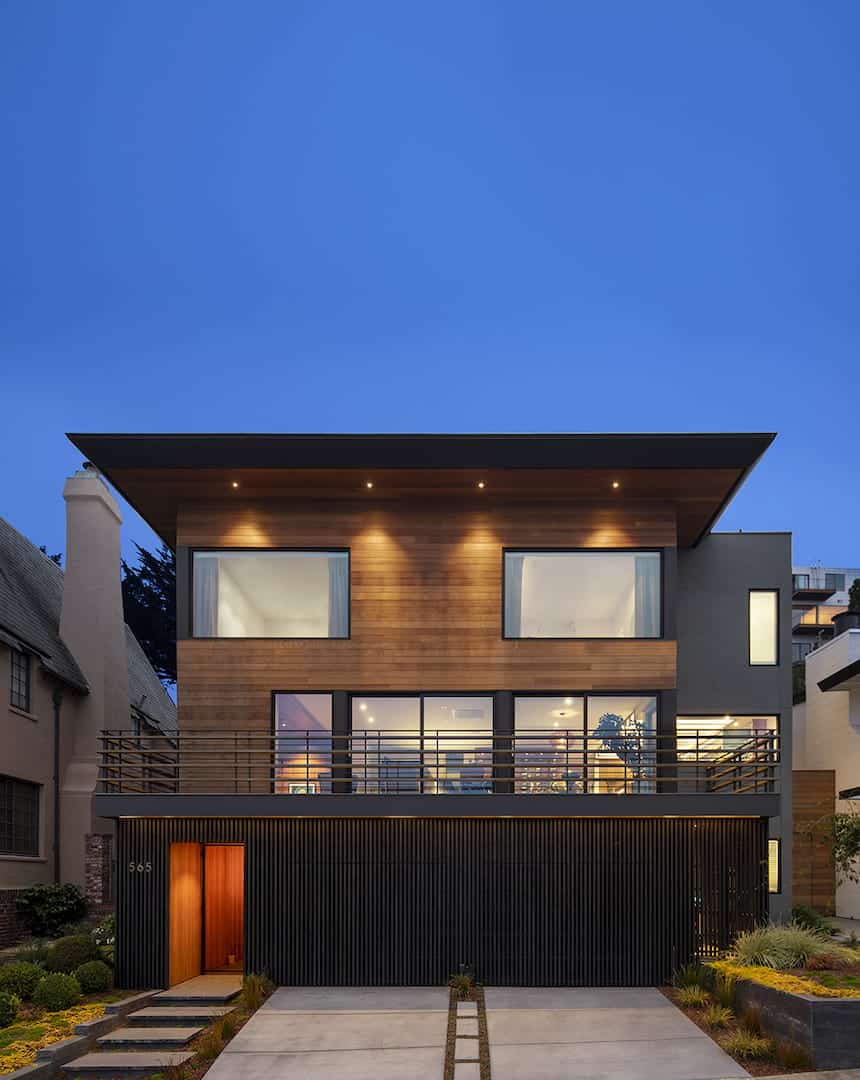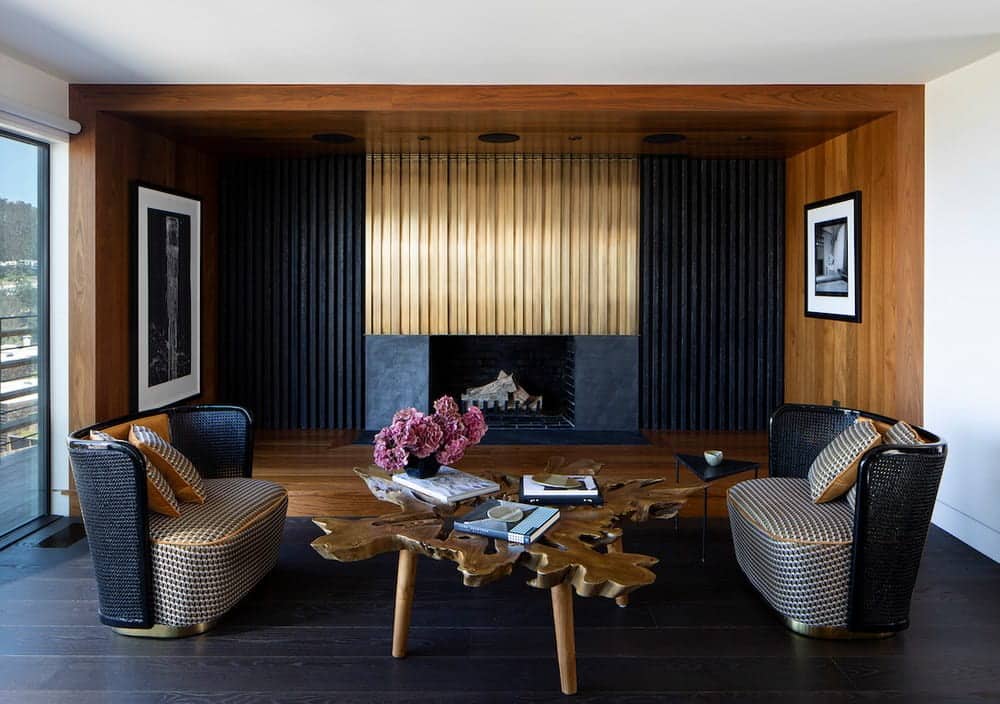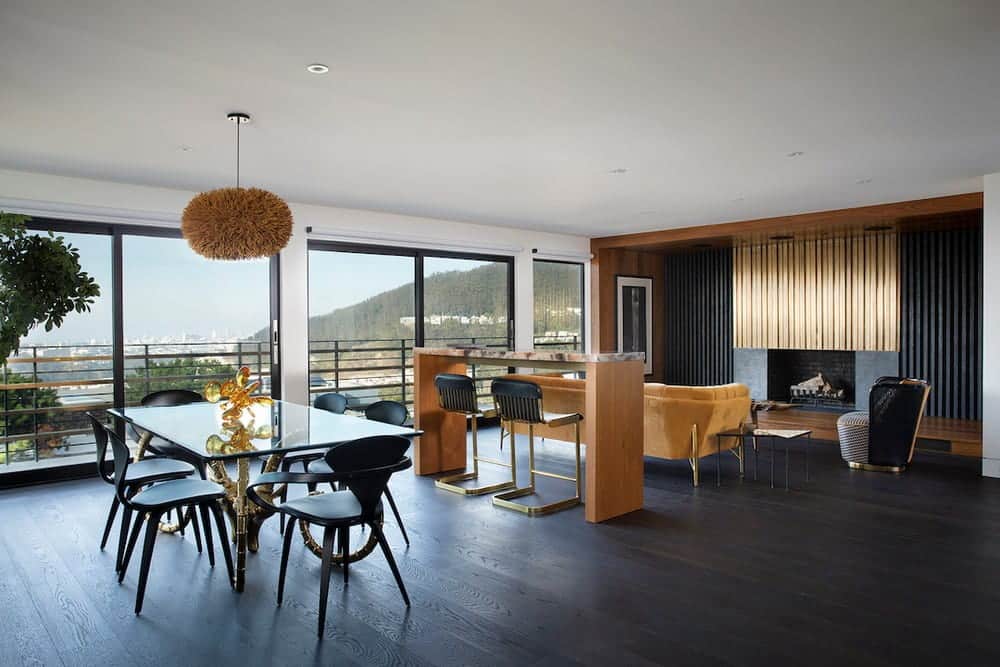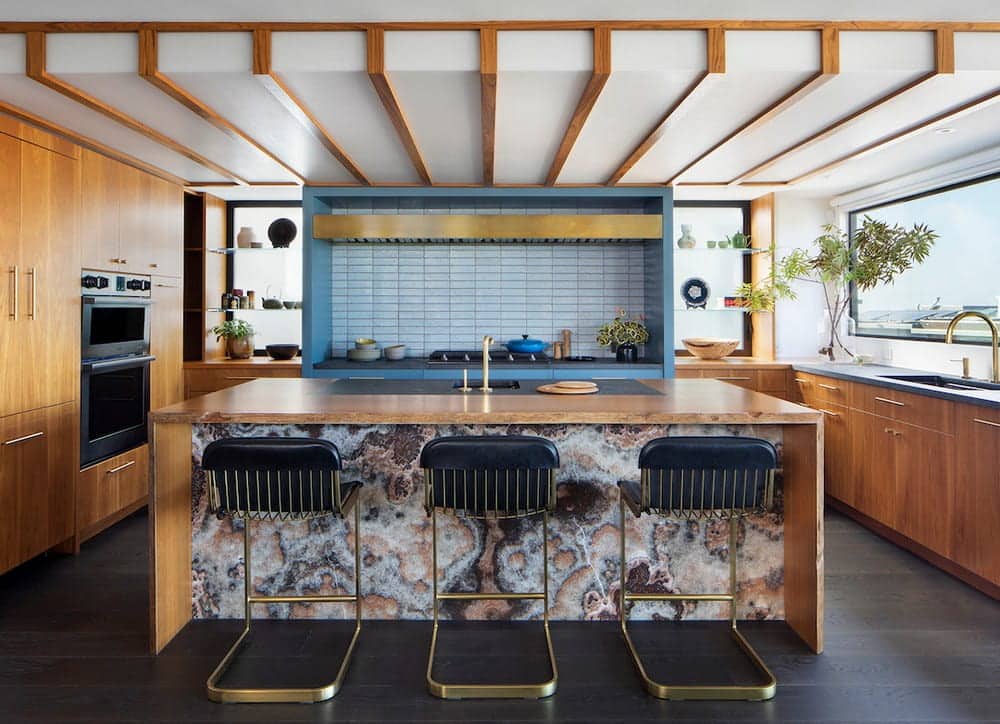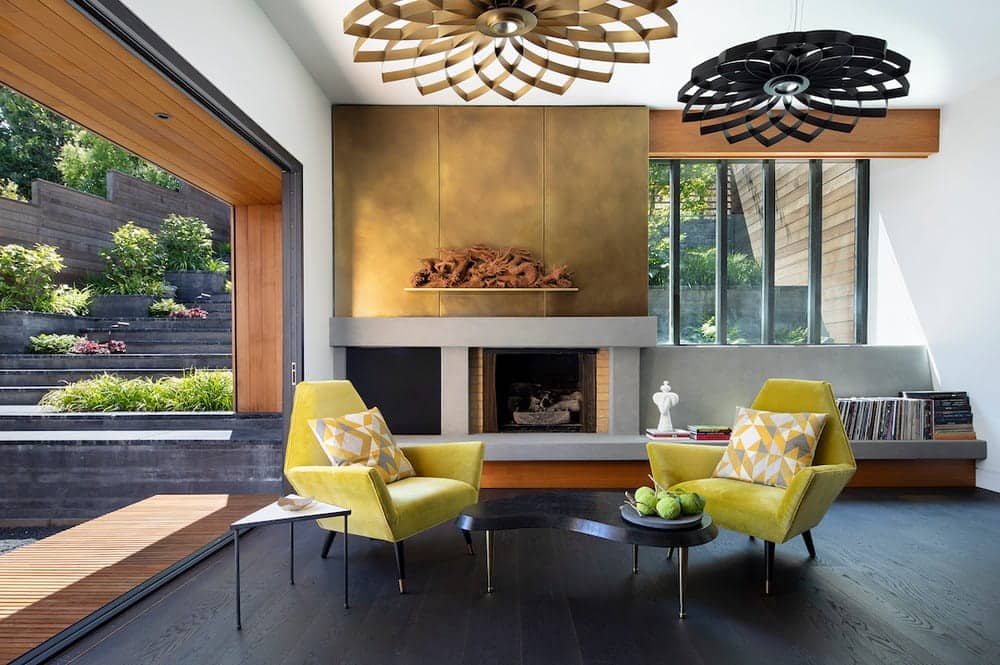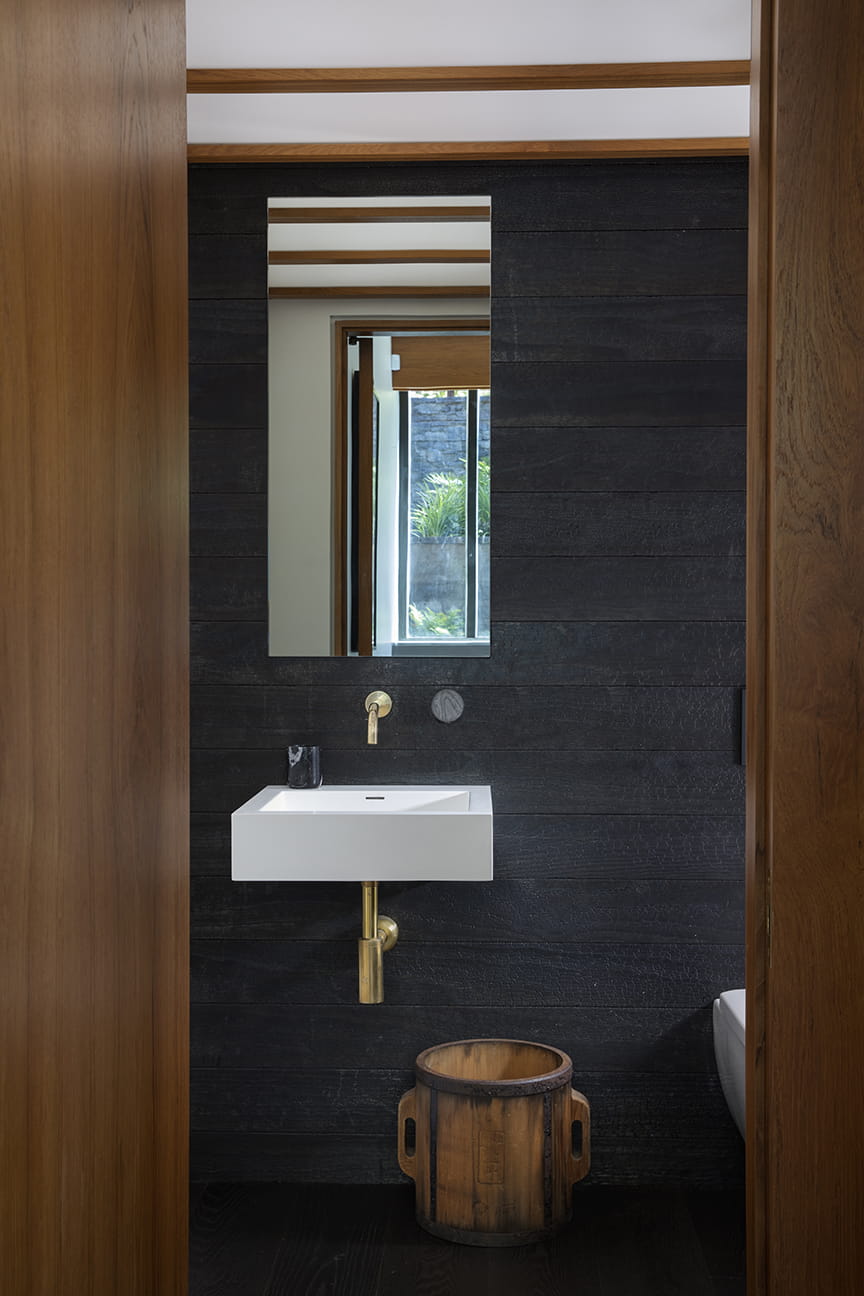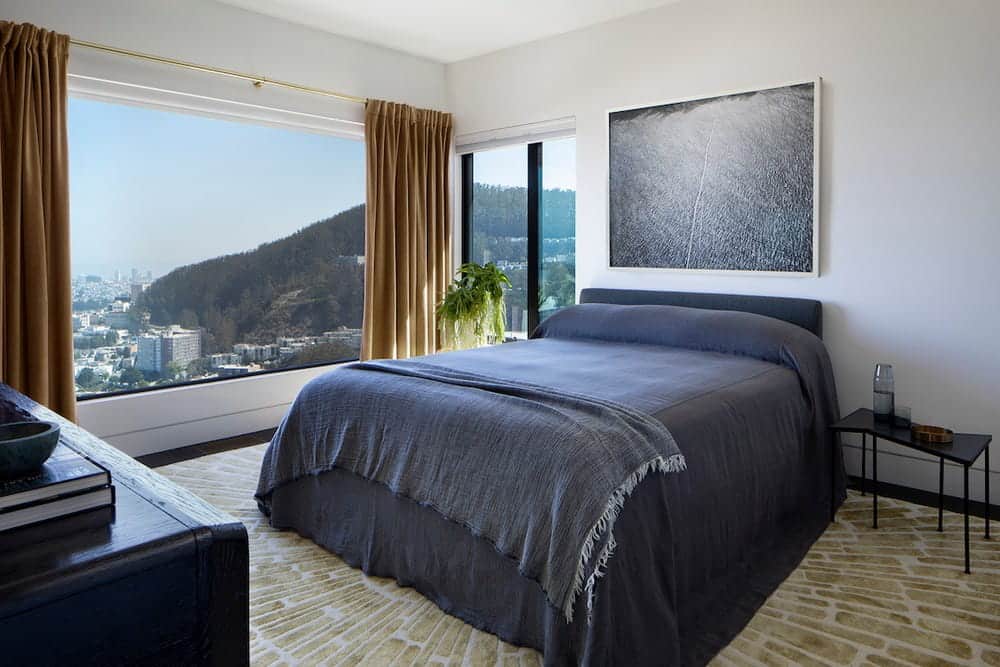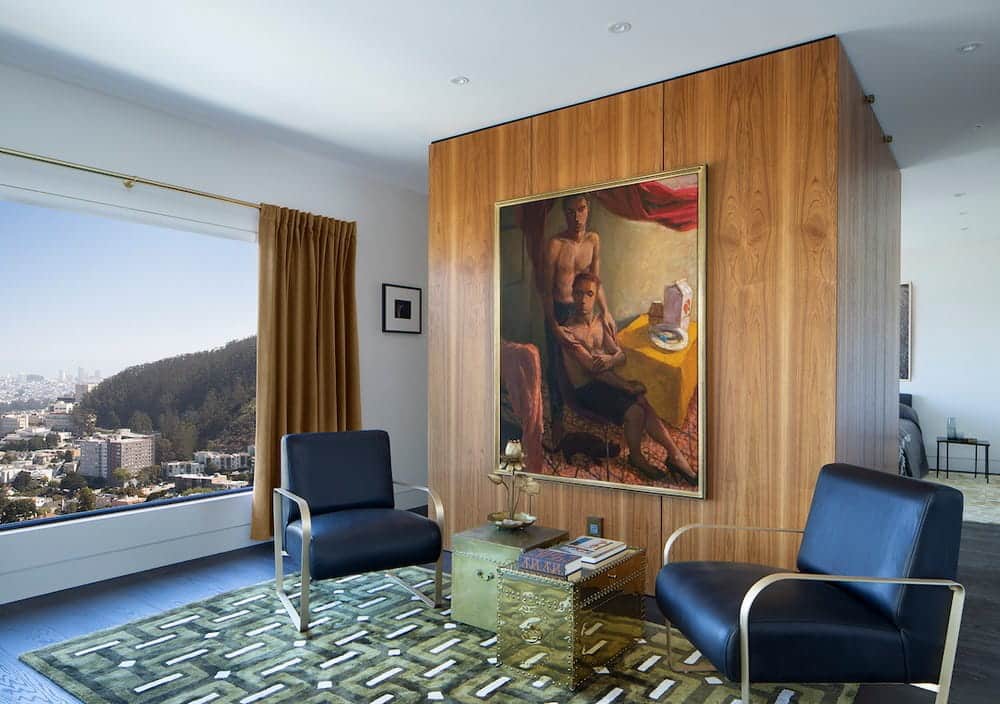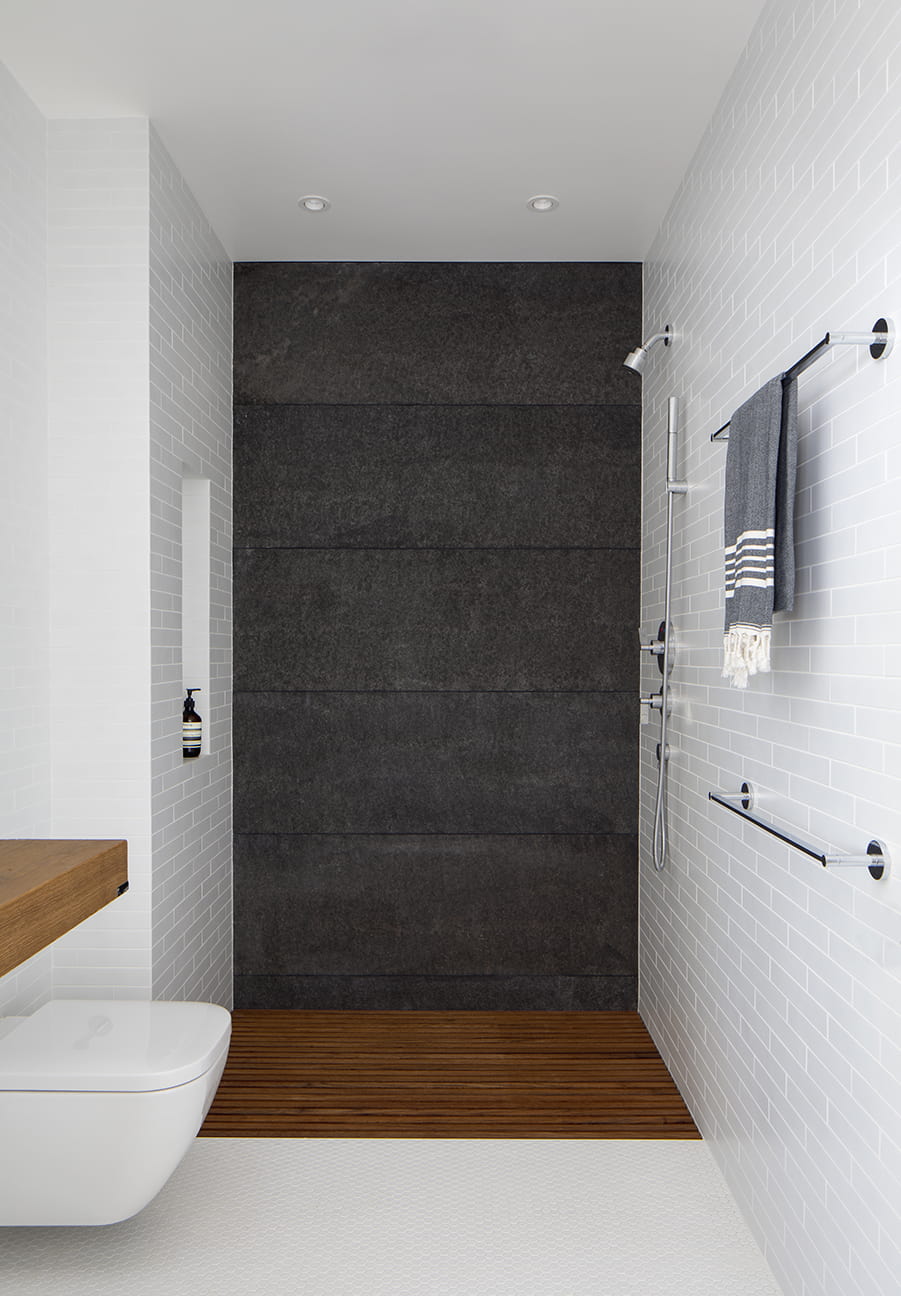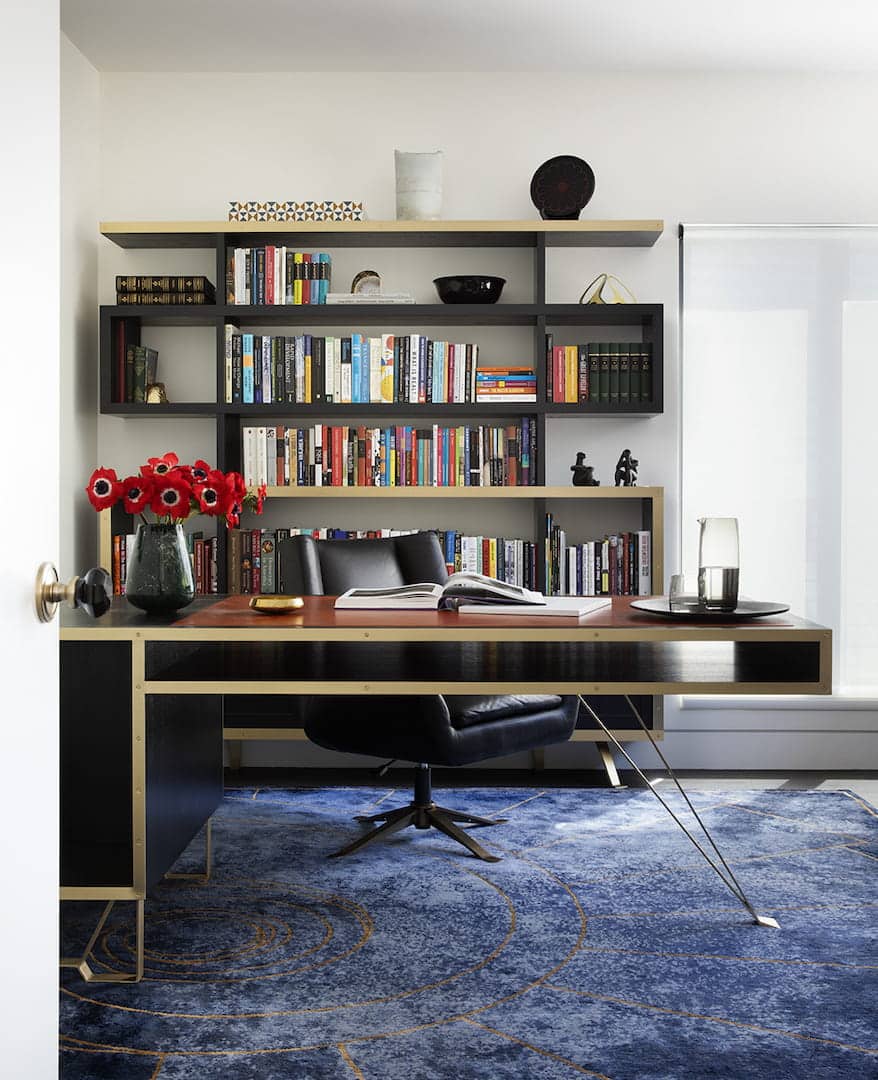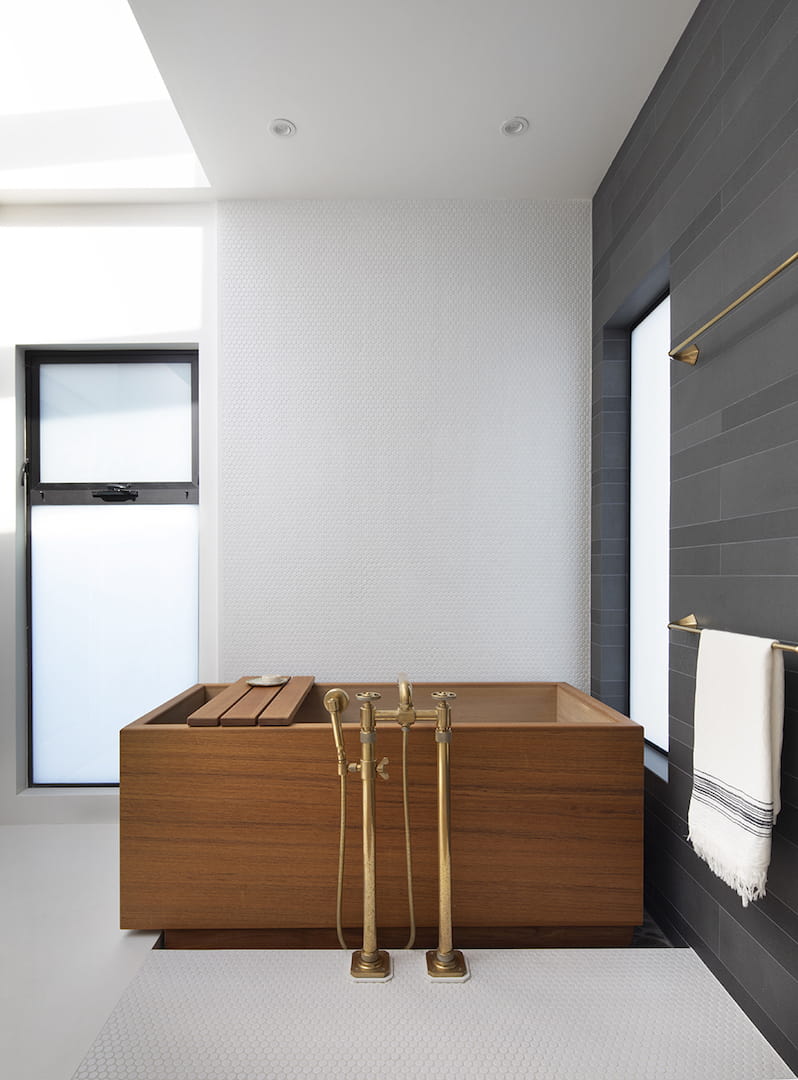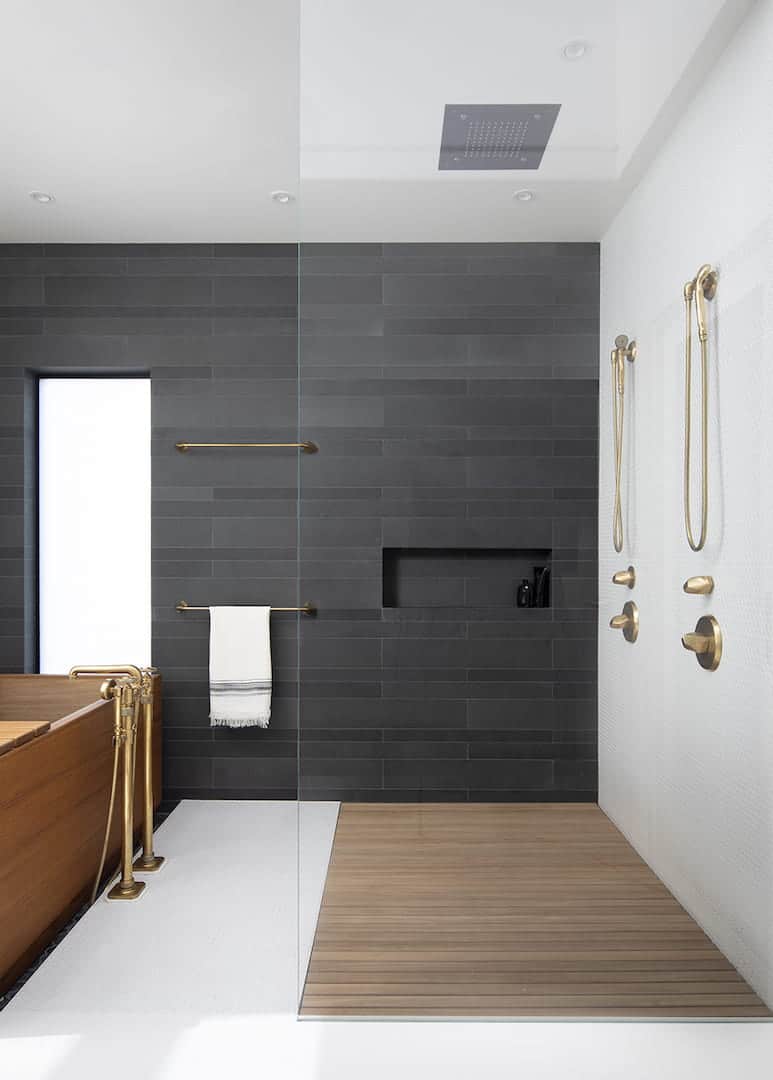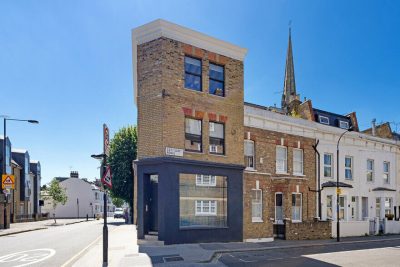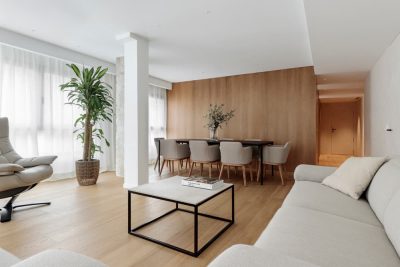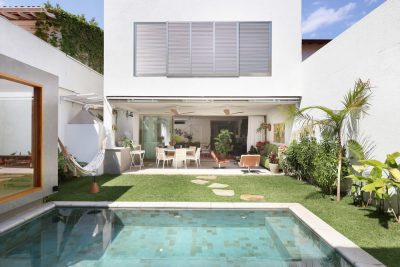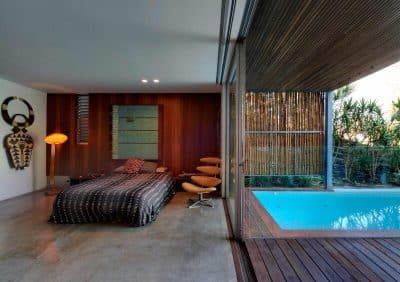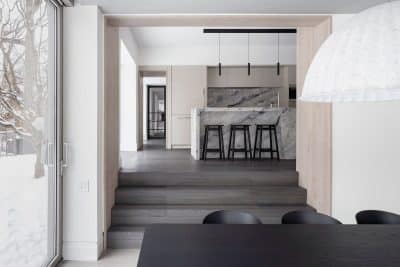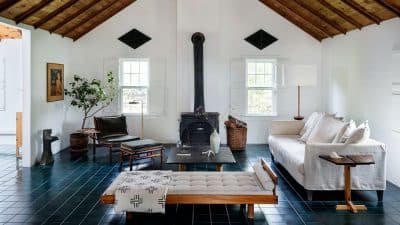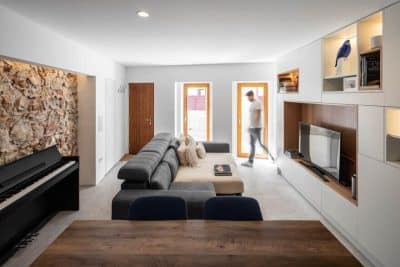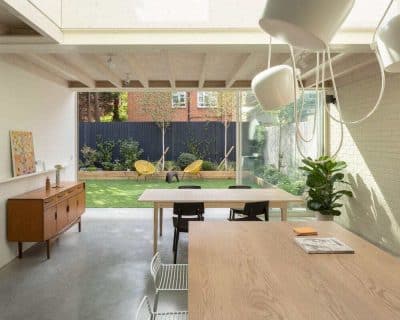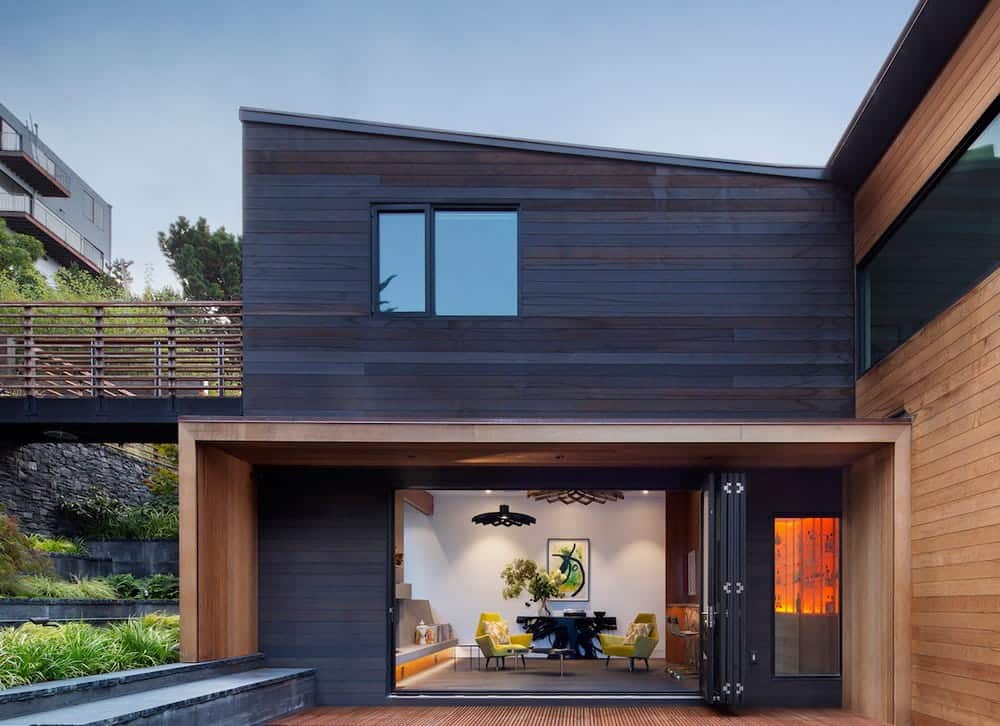
Project: Golden Gate Heights
Architecture: John Lum Architecture
Location: San Francisco, United States
Contractor: Floyd Construction
Landscape Architect: The Garden Route
Stylist: Yedda Morrison
Year: 2021
Photo Credits: Paul Dyer
Text by John Lum Architecture
Perched atop Golden Gate Heights with expansive views, this mundane, mid-century residence with compartmentalized floor plan and original fixtures and finishes, needed a major renovation.
We combined the client’s penchant for Eastern European modernism with a Japanese wabi-sabi flair, updating the house to glam. The exterior was stripped of its rotted painted siding and replaced with natural cedar and cement plaster. A shou sugi ban screen provides a unifying base, camouflaging the garage doors with the only penetration being the orange glass front gate.
The first floor was gutted to create one large entertainment room. One side of the room features a raised platform for performance that doubles as a cozy inglenook. It is anchored by a folded brass sheet chimney breast and clad in shou sugi ban. Opposite, is an open kitchen featuring illuminated ceiling, live teak edge counters, and complex marble island face. A full-height wine cabinet distinguishes the dining area, cleverly hiding the original stairs. The lounge includes a vibrantly backlit wet bar. A folding window wall opens this space to the zen entry garden where stairs ascend to a hillside guest house.
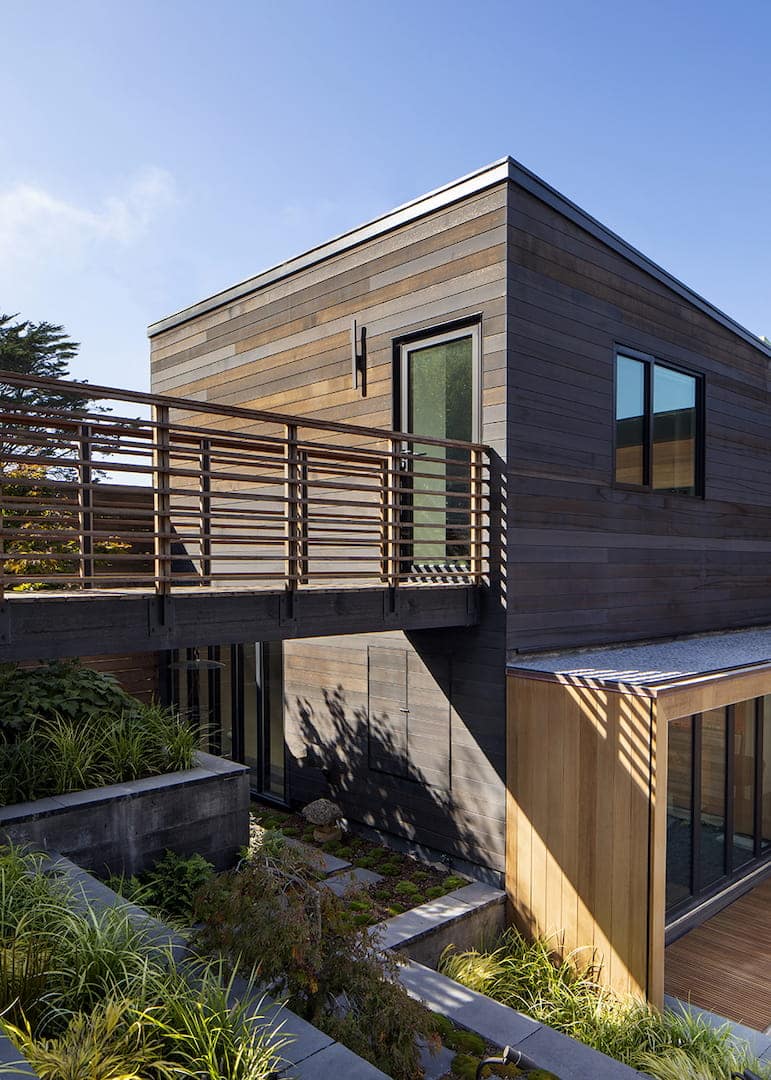
The second level was transformed into the owner’s quarters. One bedroom was converted into a sitting room for the primary suite, with a teak box separating the two that hide a walk-in closet. Another bedroom is used as an office, and the fourth bedroom was converted into a gym and guest room.
An ode to Japanese bath culture, the primary bathroom’s white penny tiles recall river stones that define the Ofuro wooden-soaking tub and walk-in shower. Switchable smart glass windows deliver privacy without sacrificing natural light.
The craftsmanship is superb. The design successfully combines an eclectic mix of eras into a comprehensive whole, reflecting the ability to reposition a house into a showplace of design while working with a fairly constrained floor plan.
